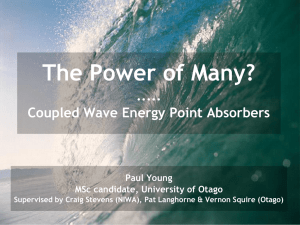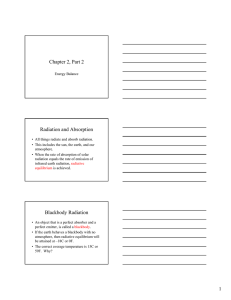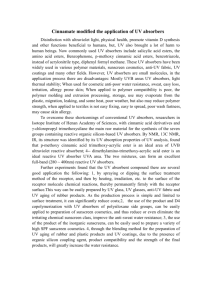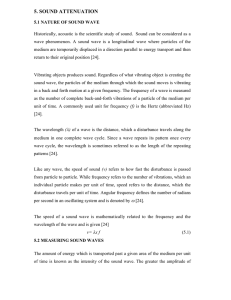WAVE ENERGY ABSORPTION BY POINT ABSORBER ARRAYS
advertisement
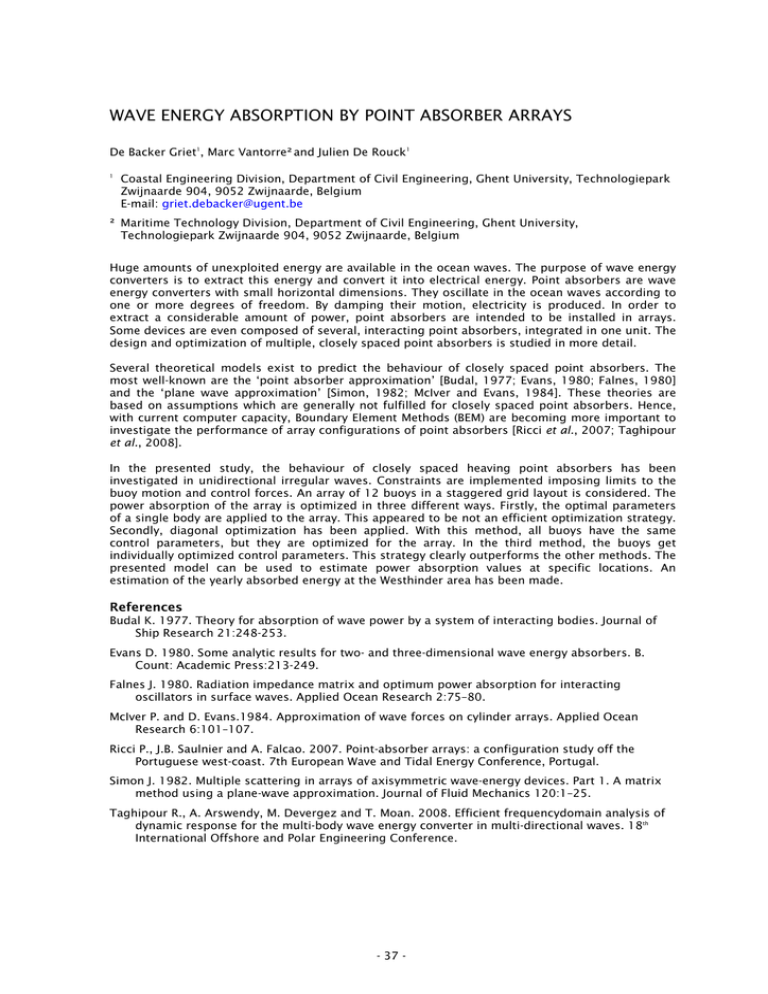
WAVE ENERGY ABSORPTION BY POINT ABSORBER ARRAYS De Backer Griet1, Marc Vantorre² and Julien De Rouck1 1 Coastal Engineering Division, Department of Civil Engineering, Ghent University, Technologiepark Zwijnaarde 904, 9052 Zwijnaarde, Belgium E-mail: griet.debacker@ugent.be ² Maritime Technology Division, Department of Civil Engineering, Ghent University, Technologiepark Zwijnaarde 904, 9052 Zwijnaarde, Belgium Huge amounts of unexploited energy are available in the ocean waves. The purpose of wave energy converters is to extract this energy and convert it into electrical energy. Point absorbers are wave energy converters with small horizontal dimensions. They oscillate in the ocean waves according to one or more degrees of freedom. By damping their motion, electricity is produced. In order to extract a considerable amount of power, point absorbers are intended to be installed in arrays. Some devices are even composed of several, interacting point absorbers, integrated in one unit. The design and optimization of multiple, closely spaced point absorbers is studied in more detail. Several theoretical models exist to predict the behaviour of closely spaced point absorbers. The most well-known are the ‘point absorber approximation’ [Budal, 1977; Evans, 1980; Falnes, 1980] and the ‘plane wave approximation’ [Simon, 1982; McIver and Evans, 1984]. These theories are based on assumptions which are generally not fulfilled for closely spaced point absorbers. Hence, with current computer capacity, Boundary Element Methods (BEM) are becoming more important to investigate the performance of array configurations of point absorbers [Ricci et al., 2007; Taghipour et al., 2008]. In the presented study, the behaviour of closely spaced heaving point absorbers has been investigated in unidirectional irregular waves. Constraints are implemented imposing limits to the buoy motion and control forces. An array of 12 buoys in a staggered grid layout is considered. The power absorption of the array is optimized in three different ways. Firstly, the optimal parameters of a single body are applied to the array. This appeared to be not an efficient optimization strategy. Secondly, diagonal optimization has been applied. With this method, all buoys have the same control parameters, but they are optimized for the array. In the third method, the buoys get individually optimized control parameters. This strategy clearly outperforms the other methods. The presented model can be used to estimate power absorption values at specific locations. An estimation of the yearly absorbed energy at the Westhinder area has been made. References Budal K. 1977. Theory for absorption of wave power by a system of interacting bodies. Journal of Ship Research 21:248-253. Evans D. 1980. Some analytic results for two- and three-dimensional wave energy absorbers. B. Count: Academic Press:213-249. Falnes J. 1980. Radiation impedance matrix and optimum power absorption for interacting oscillators in surface waves. Applied Ocean Research 2:75–80. McIver P. and D. Evans.1984. Approximation of wave forces on cylinder arrays. Applied Ocean Research 6:101–107. Ricci P., J.B. Saulnier and A. Falcao. 2007. Point-absorber arrays: a configuration study off the Portuguese west-coast. 7th European Wave and Tidal Energy Conference, Portugal. Simon J. 1982. Multiple scattering in arrays of axisymmetric wave-energy devices. Part 1. A matrix method using a plane-wave approximation. Journal of Fluid Mechanics 120:1–25. Taghipour R., A. Arswendy, M. Devergez and T. Moan. 2008. Efficient frequencydomain analysis of dynamic response for the multi-body wave energy converter in multi-directional waves. 18th International Offshore and Polar Engineering Conference. - 37 -
